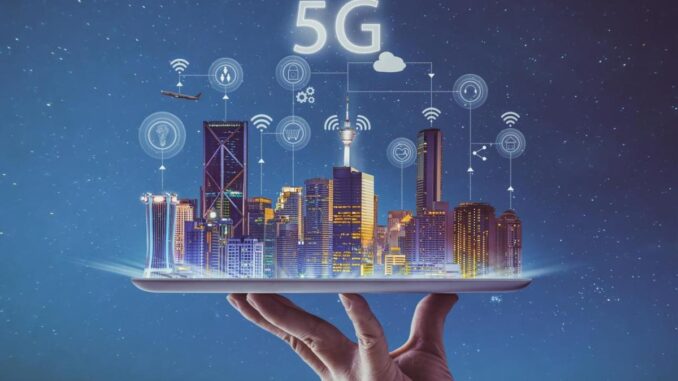
5G technology infrastructure deployment involves multiple components and steps to create a functional and efficient network capable of delivering high-speed wireless communication.
Here’s an overview of the key elements involved in deploying 5G infrastructure:









### 1. **Network Architecture**
#### a. **Radio Access Network (RAN)**
– **Small Cells**: Essential for providing coverage and capacity in dense urban areas, small cells operate at low power and are distributed throughout neighborhoods or commercial zones.
– **Macro Cells**: Larger cell towers that manage broader coverage areas, typically utilizing low-band and mid-band frequencies for extended reach.
– **Massive MIMO (Multiple Input Multiple Output)**: Technology that enhances spectral efficiency by using multiple antennas at base stations to serve multiple users simultaneously.
#### b. **Core Network**
– **5G Core (5GC)**: The core network’s architecture has evolved to support virtualized functions, enabling flexibility and scalability. It includes:
– **Service-Based Architecture (SBA)**: A design that allows network functions to interact via a service-oriented approach, enabling faster deployment of new services.
– **Network Slicing**: Ability to create virtual slices of the network that cater to different services or industries (e.g., IoT, autonomous vehicles, enhanced mobile broadband).
#### c. **Transport Network**
– **Backhaul**: Connectivity between RAN and core network, generally achieved using fiber optics for high capacity. It links base stations to data centers or core network elements.
– **Fronthaul**: Connection between the centralized baseband unit and remote radio heads, using high-speed fiber links, especially in architectures with Cloud RAN (C-RAN).
### 2. **Site Acquisition and Tower Installation**
#### a. **Site Location**
– **Geographic Planning**: Identifying optimal site locations based on user demand, geographic features, and existing infrastructure.
– **Community Engagement**: Collaborating with local communities and stakeholders to address concerns and secure necessary permissions.
#### b. **Tower Construction**
– **New Towers**: Building new communications towers, which may require intensive regulatory approval.
– **Upgrading Existing Sites**: Retrofitting and upgrading existing 4G infrastructure to accommodate 5G capabilities, which can lower costs and speed up deployment.
### 3. **Testing and Optimization**
#### a. **Field Testing**
– Conducting extensive drive tests to assess signal strength, coverage, and data throughput.
– Utilizing mobile network testing equipment to analyze performance metrics and identify areas needing improvement.
#### b. **Network Optimization**
– Adjusting locations of cells, power levels, and configurations based on test outcomes to enhance overall performance.
– Implementing software updates to improve network management and operations.
### 4. **Network Management and Maintenance**
#### a. **Monitoring Systems**
– Utilizing advanced network management tools to monitor real-time performance, manage traffic loads, and ensure service quality.
– Employing AI and machine learning algorithms for predictive maintenance and performance analysis.
#### b. **Regular Upgrades**
– Implementing software and firmware updates to incorporate new features, optimize performance, and ensure security.
– Planning for hardware refresh cycles to replace aging infrastructure components.
### 5. **Integration with Emerging Technologies**
#### a. **IoT and Smart Applications**
– Enabling a vast number of connected devices across sectors like healthcare, transportation, and manufacturing.
– Supporting applications like augmented reality (AR), virtual reality (VR), autonomous vehicles, and smart city infrastructure.
#### b. **Edge Computing**
– Deploying edge data centers to process data closer to the source, reducing latency and improving the user experience for applications that require real-time data processing.
### 6. **Regulatory Compliance**
#### a. **Permits and Licenses**
– Obtaining necessary permits from local, state, and federal regulatory bodies.
– Adhering to safety standards and regulations regarding equipment placement and electromagnetic interference.
#### b. **Environmental Considerations**
– Conducting environmental reviews and impact assessments to mitigate any potential negative effects on local ecosystems.
### Conclusion
Deploying a 5G technology infrastructure is a multifaceted process that involves a combination of advanced technologies, strategic planning, regulatory considerations, and community engagement. Successful deployment enables telecom operators not only to enhance mobile broadband services but also to unlock new opportunities for innovation across industries through the capabilities of 5G. As deployment progresses, ongoing maintenance, upgrades, and integration with emerging technologies will play critical roles in maximizing the potential of 5G networks.


Leave a Reply